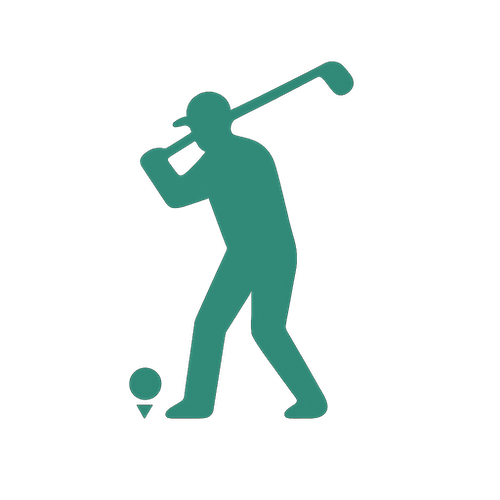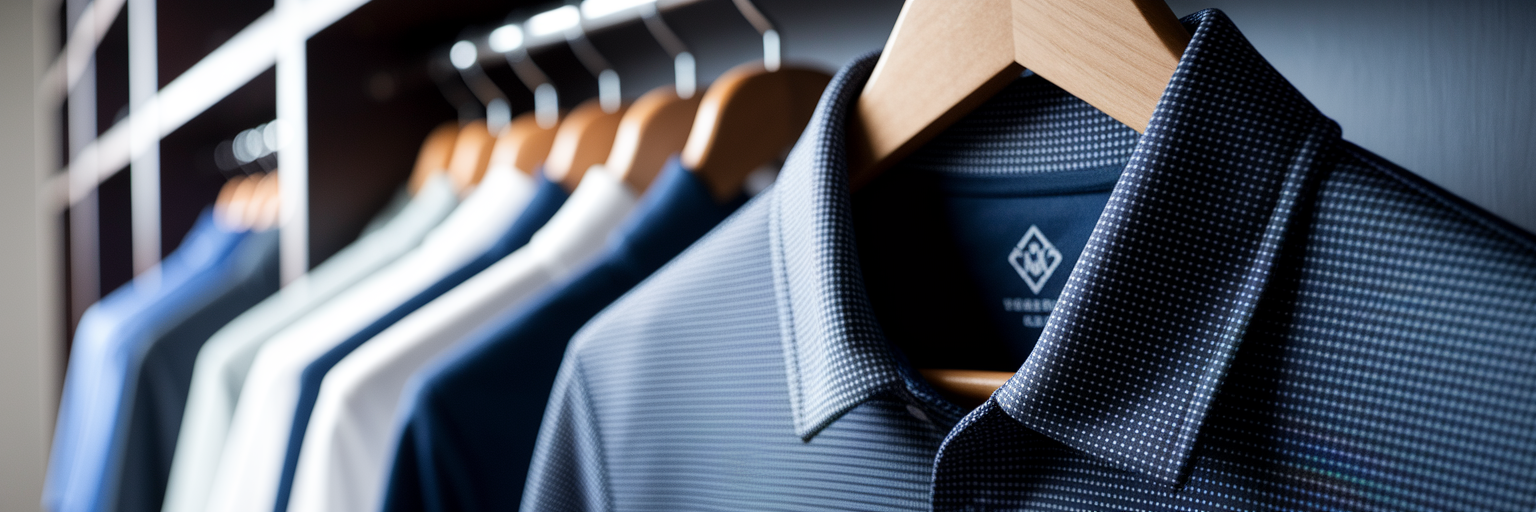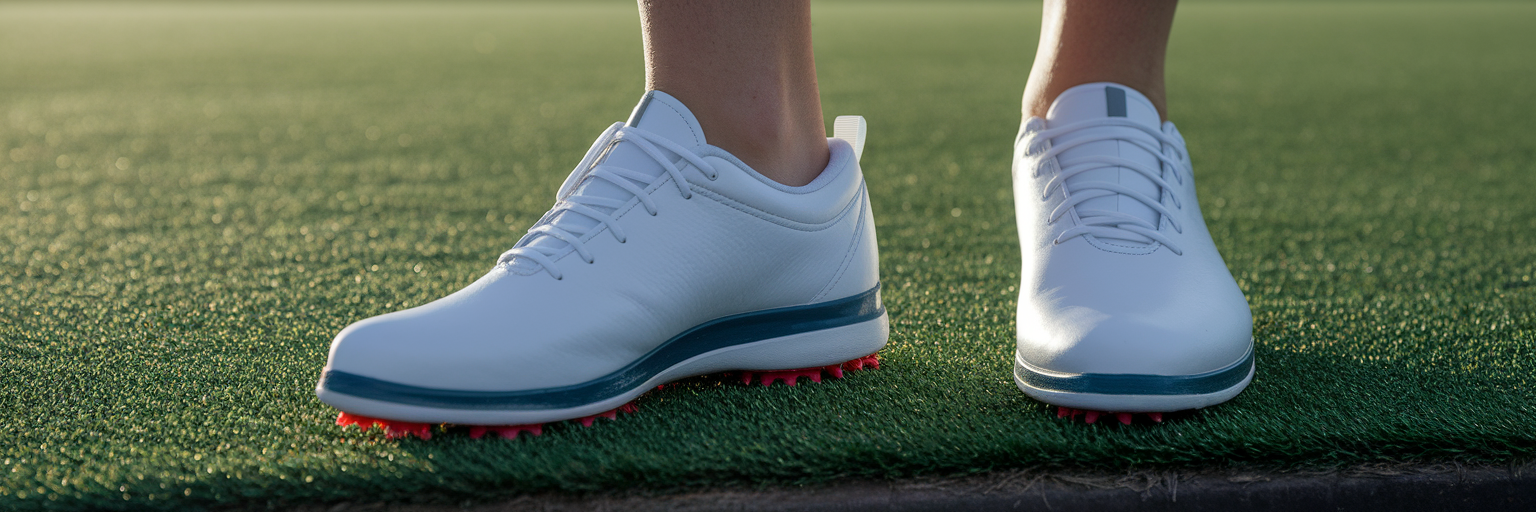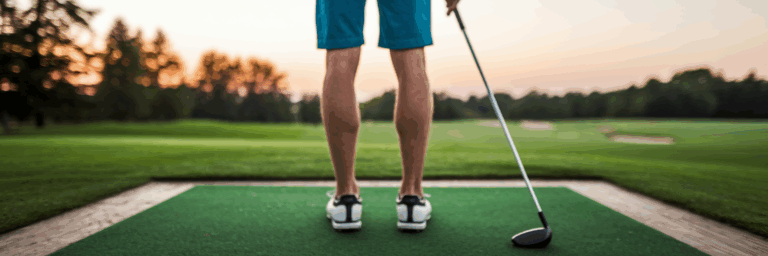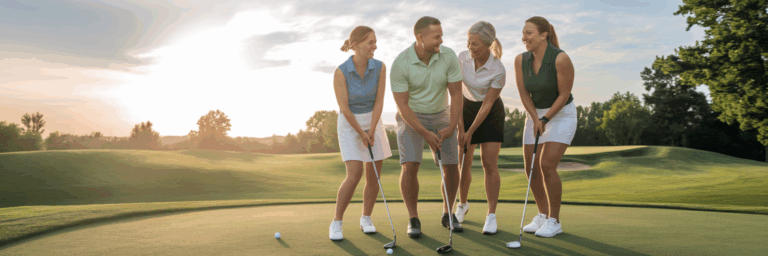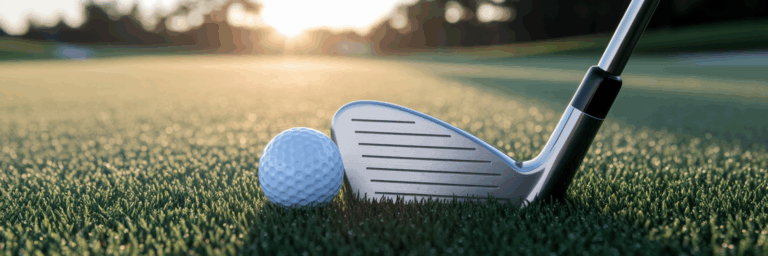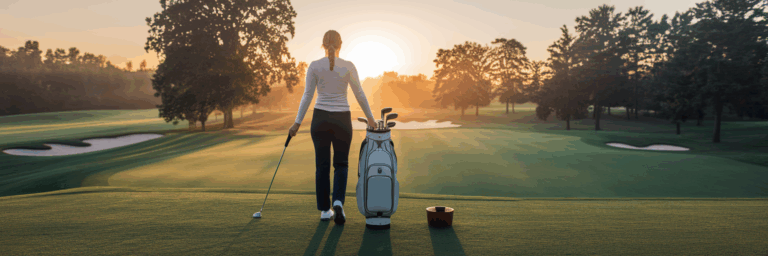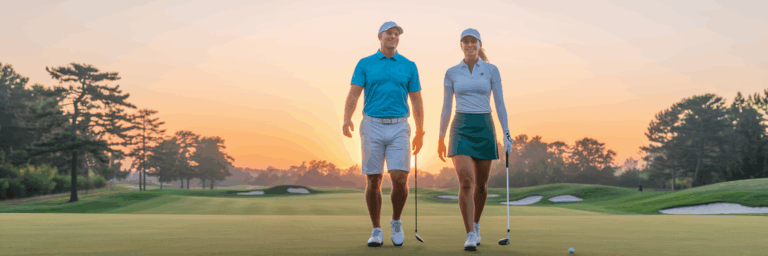Your First Guide to Golf Course Attire
Stepping onto a golf course for the first time is a mix of excitement and a little uncertainty. While you're focused on your swing, what you wear plays a surprisingly large role in feeling prepared and ready to learn.
Why Your Golf Outfit Matters More Than You Think
One of the first questions many beginners have is, "What do I even wear?" It's a valid concern, but the answer is simpler than you might think. Golf attire isn't about following a stuffy, restrictive set of rules. Instead, think of it as functional gear designed to help you play your best and feel confident while doing it.
The right clothing serves two main purposes. First, it respects the traditions of the game, helping you feel like you belong from the moment you arrive. Second, and more importantly, it improves your physical performance. Golf clothes are designed to allow a full range of motion for your swing and protect you from the elements during a round that can last several hours. When you're comfortable and not worried about your outfit, you can relax and focus on what really matters: enjoying the game.
Decoding the Standard Golf Dress Code
Most golf courses have a dress code to maintain the sport's traditions and ensure a respectful environment for everyone. While rules can vary slightly from a private club to a public course, a few standards are nearly universal. The best advice for any beginner is to quickly check the course’s website before you go, as they almost always list their specific requirements.
Tops: The Collared Shirt Standard
A collared shirt, like a classic polo, is the safest and most accepted choice for both men and women. It’s the cornerstone of any golf outfit. While some modern courses and brands have introduced mock-neck or blade-collar styles, a traditional polo shirt is never the wrong answer. This simple choice immediately shows you respect the game's etiquette. For a comprehensive men's golf attire guide, the collared shirt is always the starting point.
Bottoms: Tailored and Tidy
When it comes to pants or shorts, the key word is "tailored." This means no denim, cargo pants, sweatpants, or athletic shorts. Men should opt for khaki-style trousers or knee-length shorts. The golf course dress code for women offers a bit more variety, including tailored trousers, capris, knee-length shorts, and golf skirts or skorts. The goal is a clean, neat appearance that allows for comfortable movement.
| Apparel Item | What to Wear (Do) | What to Avoid (Don't) |
|---|---|---|
| Tops | Collared polo shirts, mock-neck shirts | T-shirts, tank tops, halter tops |
| Bottoms (Men) | Tailored trousers (khakis), knee-length shorts | Jeans, cargo shorts, sweatpants, athletic shorts |
| Bottoms (Women) | Tailored trousers, capris, knee-length shorts, golf skirts/skorts | Jeans, leggings (unless designed for golf), short shorts |
| Headwear | Baseball caps (worn forward), visors, wide-brimmed hats | Backwards caps, beanies (unless weather-appropriate) |
This table provides a quick reference for common dress code expectations at most U.S. golf courses. Always check the specific club's rules online before your visit.
Choosing Performance-Ready Shirts and Layers
A round of golf is an athletic activity, and your clothing should perform like athletic wear. This is where choosing the right fabric makes a huge difference. A standard cotton t-shirt might feel fine at first, but it absorbs sweat, becoming heavy, sticky, and uncomfortable over a few hours. Modern golf apparel is designed to prevent this.
Look for shirts made from performance fabrics like polyester, nylon, or spandex blends. These materials offer significant benefits:
- Moisture-Wicking: They pull sweat away from your skin to the fabric's surface, where it can evaporate. This keeps you cool and dry.
- Breathability: The right golf clothes for hot weather allow air to circulate, preventing you from overheating on a sunny day.
- Freedom of Movement: These fabrics stretch with your body, allowing for a full, unrestricted golf swing without pulling or bunching.
The weather on a golf course can change quickly, so layering is a smart strategy. Start with your performance polo and pack a lightweight quarter-zip pullover or a wind-resistant jacket. You can easily add or remove a layer as the temperature shifts, ensuring you stay comfortable from the first tee to the final putt.
Finding the Right Pants, Shorts, or Skorts
Just like with shirts, the function of your bottoms goes far beyond just meeting the dress code. You need pants, shorts, or a skort that moves with you. This is a key part of figuring out what to wear golfing for beginners, as comfort directly impacts your ability to learn and perform.
The Importance of Stretch and Fit
Think about the movements in golf: you swing powerfully, bend down to place your tee, and squat to read a putt. Your clothing needs to accommodate all of this without restriction. Look for bottoms made from lightweight fabrics that include a small amount of stretch, usually from materials like spandex or elastane. For shorts and skorts, the standard "Bermuda length," which falls to just above the knee, is both appropriate and practical for most courses in the U.S.
Practical Features to Look For
Modern golf bottoms are designed with the player in mind. Many include small but incredibly useful features. Look for deep pockets that can comfortably hold a couple of tees and a ball marker. Another great feature is a silicone gripper strip inside the waistband. This subtle detail helps keep your shirt neatly tucked in through every swing, so you can focus on your game instead of your appearance.
Why Your Shoes Are Your Most Important Gear
If you're going to invest in one piece of golf-specific apparel, make it your shoes. Your feet are the foundation of your golf swing, and the right footwear provides the stability and traction needed to generate power and maintain balance. Wearing running shoes or sneakers is a common beginner mistake, but they lack the specific support required for the rotational forces of a golf swing.
Spikeless vs. Soft-Spiked: What's the Difference?
Golf shoes come in two main types. Spikeless shoes have rubber studs or nubs on the sole that provide excellent grip in most conditions. They are often more comfortable for walking and are versatile enough to be worn to and from the course. Soft-spiked shoes use plastic cleats that offer superior traction, making them a great choice for wet, hilly, or challenging courses where maintaining your footing is critical.
Key Features: Comfort and Waterproofing
When shopping for the best golf shoes for walking, there are three non-negotiable features to look for:
- Waterproofing: Even on a sunny day, courses are often wet with morning dew. Waterproof shoes keep your feet dry and comfortable for the entire round.
- Cushioning: A round of golf involves walking several miles. Good cushioning prevents foot fatigue and keeps you feeling fresh.
- Lateral Stability: This is crucial. A golf shoe is designed to support the sides of your feet as you shift your weight and rotate during your swing, preventing your foot from sliding.
Avoid wearing sandals, boots, or regular athletic trainers on the course. A quality pair of golf shoes is a worthwhile investment that will directly benefit your game.
Accessorizing for Weather and Sun Protection
The final touches to your golf outfit are the accessories that prepare you for a long day outdoors. Being ready for any weather condition means you won't be distracted by discomfort. Smart accessorizing is especially important when choosing golf clothes for hot weather or preparing for a chilly morning.
For a hot, sunny day, make sure you have:
- A Hat or Visor: This protects your face and scalp from the sun and reduces glare so you can see your shots clearly.
- UV-Protective Sunglasses: Shield your eyes from harmful rays and make it easier to track the ball against a bright sky.
- Sunscreen: An absolute must. Apply it before your round and reapply as needed.
For a cold or potentially rainy day, consider packing:
- A Warm Beanie or Earmuffs: A surprising amount of body heat is lost through your head.
- Waterproof Outerwear: A good rain jacket and pants can save a round that might otherwise be cut short.
- Rain Gloves: These specialized gloves are designed to maintain a secure grip on the club even when wet.
Finally, never underestimate the importance of good socks. Choose moisture-wicking socks over cotton to prevent blisters and keep your feet dry and comfortable, no matter the weather.
Dressing for Confidence on the Course
Your golf attire is more than just a uniform. It's a tool that helps you feel comfortable, prepared, and confident. When you follow the dress code, you eliminate any worry about fitting in. When you choose performance fabrics, you ensure your body can move freely and stay comfortable for hours. And when you wear proper golf shoes, you build your swing on a stable, reliable foundation.
By taking a few moments to prepare your outfit, you remove a layer of anxiety that many beginners feel. This frees up your mental energy to focus on the fun and challenge of the game itself. You'll arrive at the first tee feeling prepared, confident, and ready to embrace the challenge of learning how to play golf. We're here to support you on every step of that journey.
